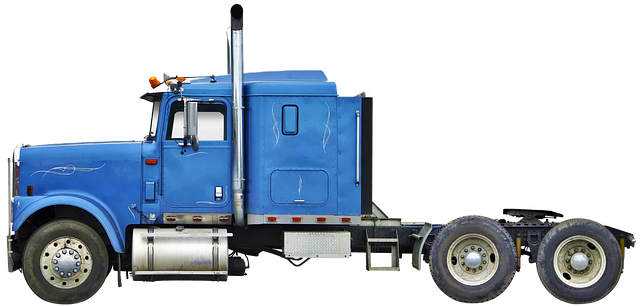Learn how to navigate the process of registering your car in California with our comprehensive guide. Understanding eligibility requirements, gathering essential documents, and mastering the DMV VIN verification step-by-step is key. From scheduling a visit to paying registration fees, we break down each crucial stage to ensure a smooth experience. By following these clear instructions, you’ll be on your way to securing your vehicle’s registration in no time.
- Understand Eligibility Requirements for Car Registration in California
- Gather Necessary Documents for DMV VIN Verification
- Schedule and Visit a California DMV Office for Vehicle Registration
- Complete the DMV VIN Verification Process Step-by-Step
- Pay Registration Fees and Receive Your Vehicle's Registration Papers
Understand Eligibility Requirements for Car Registration in California

Before diving into the registration process, it’s crucial to understand the eligibility requirements for car registration in California. To register your vehicle, you’ll need to meet certain criteria set by the Department of Motor Vehicles (DMV). Firstly, ensure that your car is legally imported and compliant with state safety and emission standards. The DMV requires a Vehicle Identification Number (VIN) verification process, often facilitated through a dmv vin verification or mobile vin inspection. This step is vital to confirm the vehicle’s authenticity and history.
Additionally, you’ll need valid registration documents from the previous state of residence, proof of insurance, and possibly other paperwork depending on your specific circumstances. A vin inspection by a trusted mobile vin verifier can streamline this process, ensuring all details match and facilitating a smooth transition for your California car registration.
Gather Necessary Documents for DMV VIN Verification

To register your car in California, you’ll first need to gather all the essential documents for a successful dmv vin verification. This process is crucial to ensure the accuracy and legitimacy of your vehicle’s information. You’ll require several key pieces of documentation, including your vehicle’s registration certificate from the previous state (if applicable), proof of insurance, and a valid driver’s license. Additionally, the vin inspection involves verifying the unique identifier (VIN) on your car, which can be done through various methods, including a mobile vin verification.
Make sure you have the owner’s manual and any maintenance records handy as they might be needed for reference during the verification process. Some states offer online tools to facilitate this step, allowing you to input your VIN and access important details about your car’s history. By having all these documents ready, you’ll streamline the registration process at the California Department of Motor Vehicles (DMV).
Schedule and Visit a California DMV Office for Vehicle Registration

To register your car in California, scheduling a visit to a DMV office is a necessary step. Before heading in, ensure all required documents are prepared, including proof of ownership, vehicle identification number (VIN) verification, and any applicable fees. The process involves submitting these documents to a DMV representative who will conduct a thorough inspection. This includes verifying the VIN, which can be done efficiently with a mobile vin inspection or through the traditional on-site check.
During your visit, you’ll need to complete necessary forms and provide additional information such as proof of insurance and identification. The DMV employee will guide you through the process, ensuring that all details are accurate and up-to-date. This step is crucial for legally operating your vehicle on California’s roads, so it’s best to schedule a visit at a time that works for you, avoiding peak hours if possible to streamline the registration process.
Complete the DMV VIN Verification Process Step-by-Step

To complete the DMV VIN verification process, follow these clear steps to ensure a smooth registration experience. First, gather all necessary documents, including your vehicle’s registration certificate, proof of insurance, and valid driver’s license. Then, schedule or request a DMV vin inspection by visiting the California Department of Motor Vehicles (DMV) website or contacting a local DMV office.
During the vin inspection, a DMV official will verify the Vehicle Identification Number (VIN) and compare it against records to ensure the vehicle matches the information on file. They’ll also check for any outstanding issues, such as theft or outstanding fines. For convenience, many services offer mobile vin verification options, allowing you to complete this step from the comfort of your home or office. Once the inspection is passed, proceed with the registration process at the DMV or online, finalizing your vehicle’s registration in California.
Pay Registration Fees and Receive Your Vehicle's Registration Papers

After submitting your application for vehicle registration at the California DMV, the next step is to pay the associated fees. These fees vary based on factors like the type of vehicle and its age. It’s crucial to ensure you have a valid and current vehicle inspection, which can be completed using a mobile vin verifier or through a professional inspection service. Once your application is approved and all fees are paid, including any additional costs for specialized plates or registration renewals, the DMV will issue your vehicle’s registration papers. These documents confirm your vehicle’s legal status in California and must be displayed on your dashboard when driving.
Don’t forget that proper documentation and fee payment are essential steps in the car registration process. Failure to do so could result in delays or even rejection of your application. Always verify all information with a local DMV office or use a mobile vin inspection tool for peace of mind throughout the registration process.
Registering a car in California involves several straightforward steps, from understanding eligibility requirements to completing a precise dmv vin verification. By gathering all necessary documents and visiting a DMV office, you can efficiently navigate the process. Remember to pay attention during the VIN verification step, as it’s crucial for a successful registration. Once completed, you’ll receive your vehicle’s registration papers, allowing you to legally operate your car in the Golden State.
